In conjunction with our Spectober presentation of Mexican filmmaker Emiliano Rocha Minter’s 2018 feature WE ARE THE FLESH, Spectacle is thrilled to revisit the seminal works of his mother, video artist and filmmaker Sarah Minter (1953-2016). Minter’s lightly fictionalized punk films NADIE ES INOCENTE and ALMA PUNK (as well as shorts codirected with her then-partner Gregorio Rocha, also included in this series) served as testimony to teenage nihilism, crumbling infrastructure and a new generation of olvidados on the margins of society.
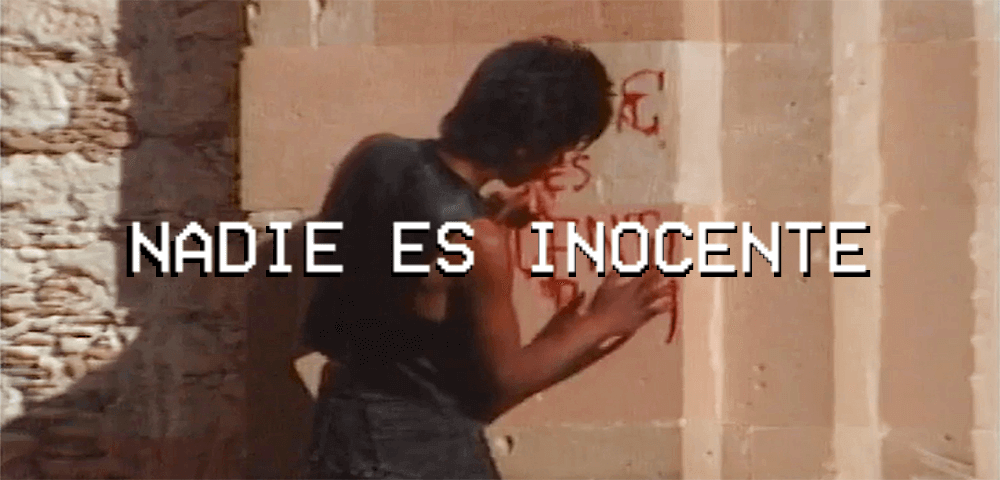
NADIE ES INOCENTE
(NO ONE IS INNOCENT)
dir. Sarah Minter, 1985-87
55 mins. Mexico.
In Spanish with English subtitles.
Saturday, October 2 – 5pm
Thursday, October 28 – 7:30pm
STREAMING AT STREAM.SPECTACLETHEATER.COM
Monday, October 11 – 7:30pm
No hay
no hay futuro
No hay
No hay amor
No hay
No hay cemento
Yey yey
Los mierdas soy yo
Sarah Minter’s no-future classic NADIE ES INOCENTE is a fictionalized document of the chavos banda (youth gang) punk community in the slums of Mexico City’s Ciudad Nezahualcóyotl (also known as Neza York) shot on Betacam over a number of years. Minter structures the film around bad trip of a reformed punk named Kara as he takes the train from Neza back to the main city; delivered in both flashback and voiceover monologue, his memories serve as desolate testimony from an apocalyptic adolescence. NADIE ES INOCENTE was written and performed in collaboration (Minter would later say, complicity) with the young Mierdas Punks who play themselves onscreen, and betrays Minter’s extraordinary access. The film also repurposes 16mm concert footage from her collaboration with Gregorio Rocha SABADO DE MIERDA (SATURDAY OF SHIT), using slow motion and inventive sound editing to give big-screen gravitas to handheld shots of desert throwdowns as Kara’s self-extinguishing memories. Shown and distributed locally on VHS in New York City by Karen Ranucci’s Downtown Video for years before it was seen in Mexico, NADIE ES INOCENTE is a remarkable and unsentimental depiction of teenage life and urban displacement.
screens with
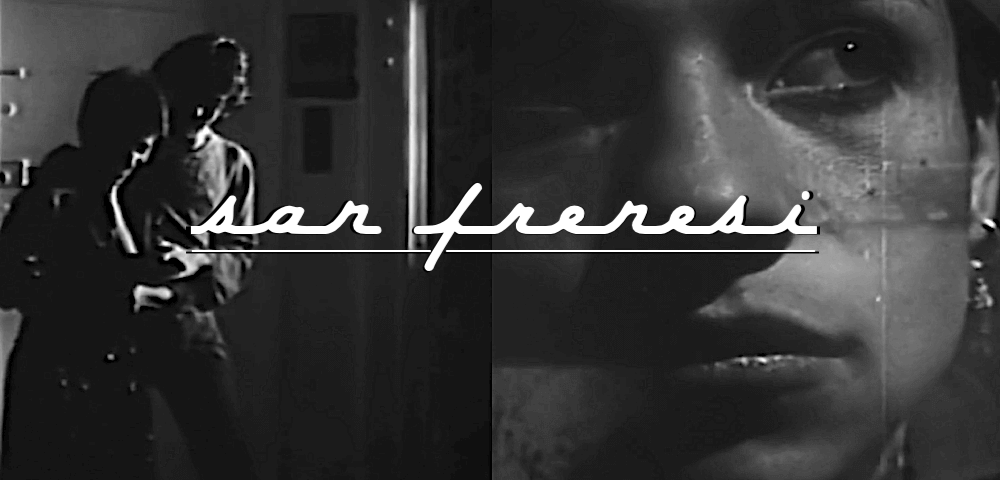
SAN FRENESI
(SAINT FRENZY)
dirs. Sarah Minter and Gregorio Rocha, 1983
34 mins. Mexico.
In Spanish with English subtitles.
Starring Maribel Mejia as a young woman who goes on a road trip reeling from a string of heartbreaks and bad relationships, Minter’s early collaboration with her then-partner Rocha feels more apiece with the French New Wave influences of a successive generation. (She spoke admiringly about Godard in an interview, but described her later ideas as more directly influenced by Dziga Vertov.) There isn’t a ton of evidence of the staccato editing that would mark NADIE ES INOCENTE, but one prolonged sex scene – in which a furiously edited sequence of sound effects takes center stage over abstracted imagery – can only hint at the individual liberation to follow.
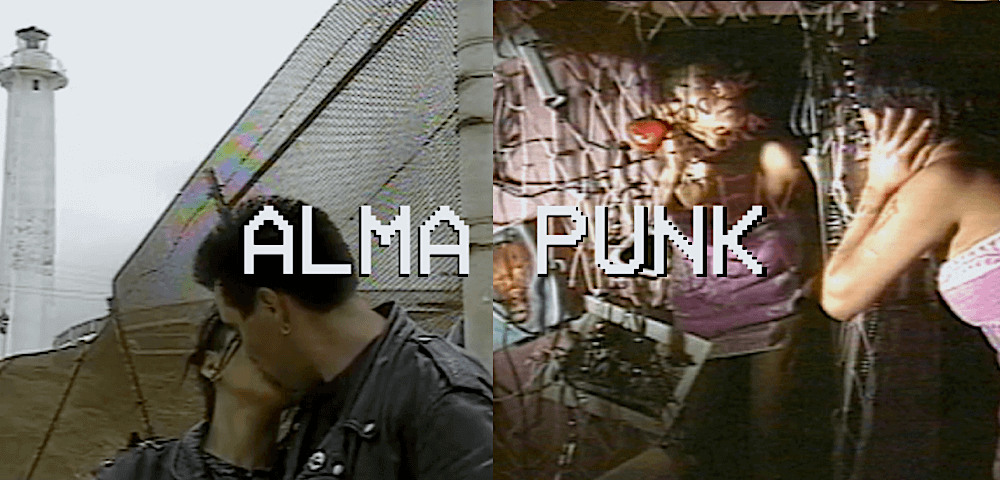
ALMA PUNK
dir. Sarah Minter, 1991-92
56 mins. Mexico.
In Spanish with English subtitles.
Saturday, October 2 – 10pm
Thursday, October 14 – 7:30pm
Friday, October 22 – 7:30pm
STREAMING AT STREAM.SPECTACLETHEATER.COM
Tuesday, October 12 – 7:30pm
Part-improvised and starring a cast of nonactors led by real-life punk Ana Hernandez (as Alma, which also means “soul”), ALMA PUNK traces the tortuous path of a young riot grrl from the Mexico City punk scene as she moves north to Tijuana and, eventually, towards the United States. It confidently breaks with the rules of staging docudrama with an unsparing look at Alma’s love life, unfakeable scene bohemianism and extensive location footage of Mexico before NAFTA and after the 1985 earthquake. “I feel like no one is supporting me,” Alma says. “Guys want everything and give nothing in return. Isn’t that so?” Like NADIE ES INOCENTE, this film uses the intimacy and flexibility of video (this time, 3/4″) to wring innovation in the editing room, this time to give Alma a similarly alienated and jittery headspace.
(screens with)
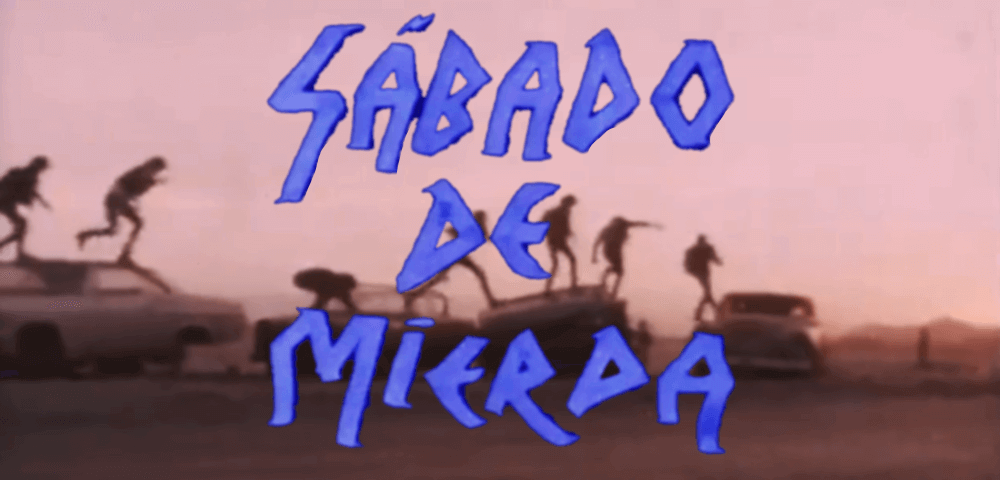
SABADO DE MIERDA
(SATURDAY OF SHIT)
dirs. Sarah Minter and Gregorio Rocha
25 mins. 1988.
In Spanish with English subtitles.
Bookended with snippets of This Heat’s classic 1979 slow-burn “Twilight Furniture”, SABADO DE MIERDA is a classic rockers-versus-punks story set in a near-autonomous version of Neza York in the year 2000, lorded over by teenage punk gangs. The movie plays at once like riveting docudrama and sprawling music video: capturing one massive crowd scene, Minter and Rocha paid off police officers to stage an intervention that sends dozens of punks scattering between the floodlights. The desert depicted is at once a Mad Max-influenced arena of brawling moshpits and mob rule, but also a permanent freedom from the rules and demands of society.
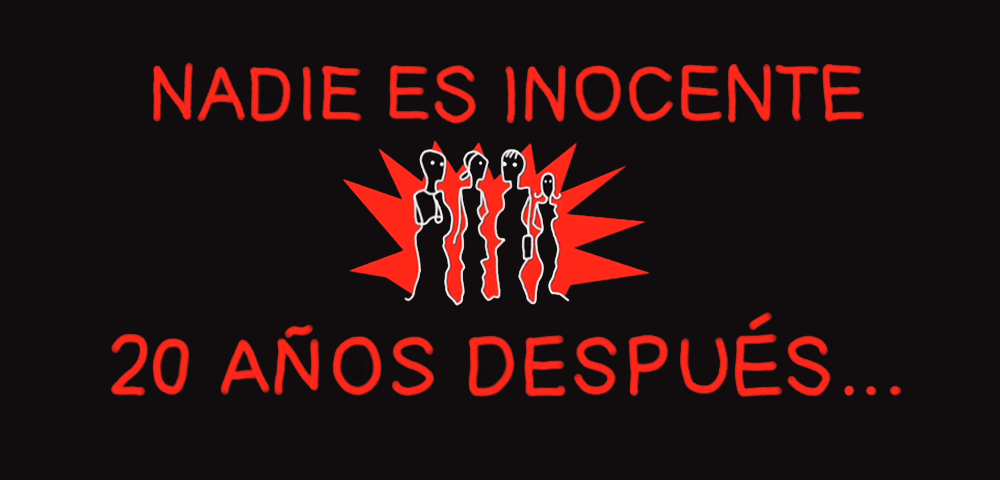
NADIE ES INOCENTE: 20 YEARS LATER
(NADIE ES INOCENTE: 20 ANOS DESPUES)
dir. Sarah Minter, 2010
72 mins. Mexico.
In Spanish with English subtitles.
Saturday, October 2 – 7:30pm
Thursday, October 28 – 10:00pm
STREAMING AT STREAM.SPECTACLETHEATER.COM
Monday, October 11 – 10:00pm
In one of her final linear video works before her untimely death in 2016, Sarah Minter revisited the community of punks from Nezahualcoyotl (or “Neza York”) vividly captured in NADIE ES INOCENTE, indeed, twenty years later. 20 ANOS DESPUES necessarily becomes a portrait of Mexico’s post-NAFTA economic growth, the onset of middle age, and the mellowing of nihilist sensibilities: one punk has become a hardcore Christian, while another exorcises his anger by painting grotesque oil portraits. The result is a sober, yet moving, depiction of life’s surprising longeurs (not entirely unlike Michael Apted’s UP series) but for the members of the Mierdas Punks like Juan Martinez (“el Kara” in NADIE ES INOCENTE), one of several of Minter’s teenage antiheroes who didn’t make it.
SARAH MINTER (1953-2016) was a pioneering video and installation artist, a photographer, curator and avant-garde theater performer from Mexico. She spent her early 20s collaborating with Juan Carlos Uviedo, an exiled Argentinean theater director who had migrated to Mexico City after many years heading the Living Theatre at La Mama in the East Village. Minter’s video works are bitter, unforgettable dispatches from the margins of society, drawn in opposition to the tropes and food chains of TV documentary and theatrical distribution; she later experimented with looped installations shot over the course of many years. This is how she described her approach to video as opposed to film:
“I learned to edit and resolve things technically on my own. Creative and financial independence are very important to me, especially if we remember that in the 1980s there was practically no existing support of any kind. I saw people trying to get things done and it took them ten years to make their next movie. That was basically the panorama. They were all failed attempts, and on top of all that, independent film was totally hermetic… If you got money to film, you had to do it with a high percentage of union workers, and if not, you had to pay replacement fees. And once you’d pulled it off it wasn’t easy to show your work. There weren’t festivals in the same quantity as there are today; in Mexico there were hardly any at all, and there were very few in the rest of the world—it wasn’t easy even for famous people. The only kinds of film that kept getting made were Mexican sex comedies and totally commercial movies, which controlled everything.”
